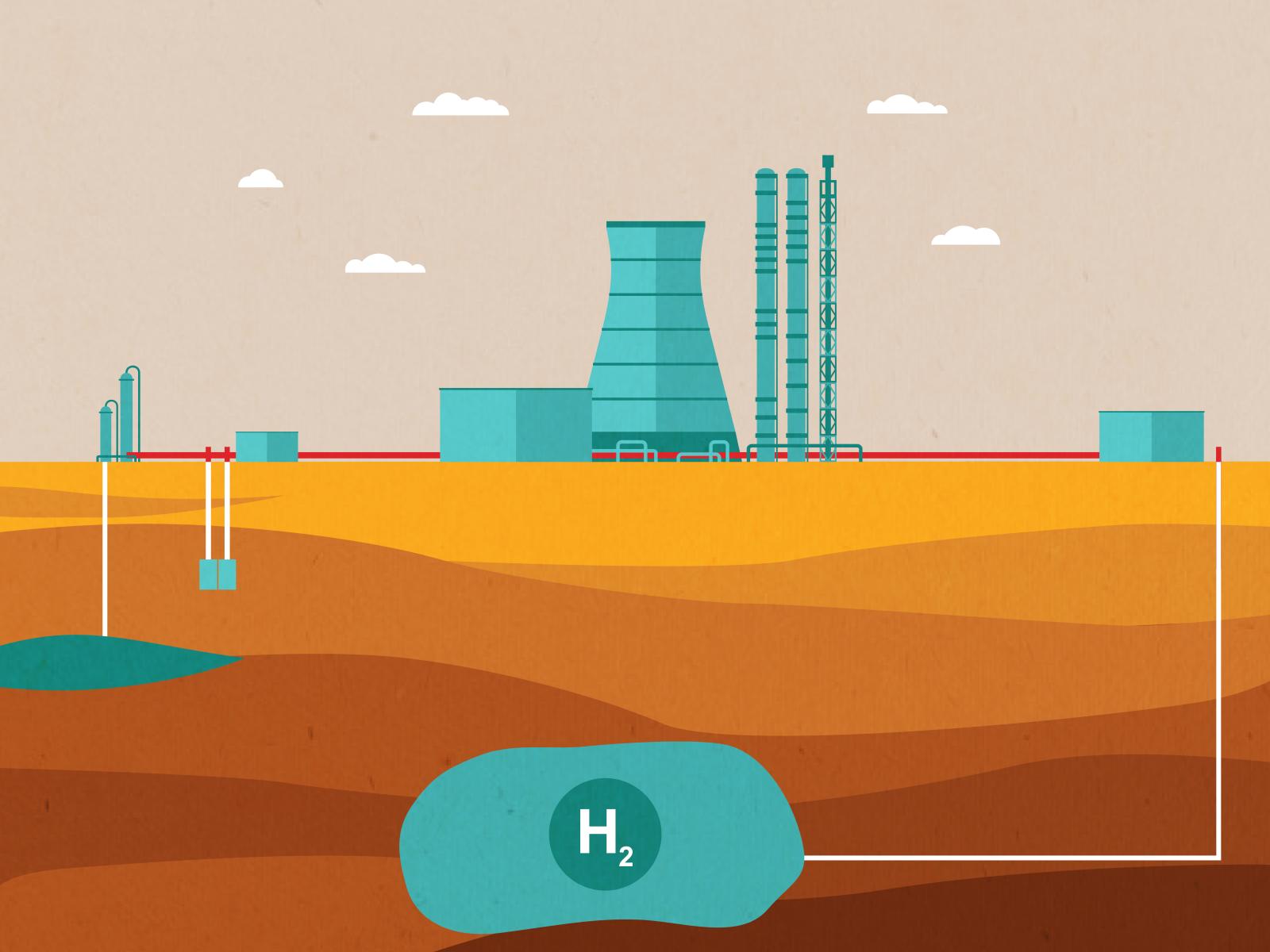Taking Underground Hydrogen Storage Mainstream
SHASTA program explores using gas storage fields for hydrogen

The SHASTA project is working to lay the foundations for a robust hydrogen energy economy by helping to enable underground hydrogen storage fields.
(Illustration by Stephanie King | Pacific Northwest National Laboratory)
As the nation lays the foundation for a robust hydrogen energy economy, widespread hydrogen storage will be necessary, much of it underground—including, possibly, in gas storage fields like salt caverns and aquifers that have been used for decades to store natural gas.
To store hydrogen in those systems, researchers first need to understand and address any new challenges posed by storing hydrogen fuel in these preexisting storage fields.
One project supporting that goal is the “SHASTA” program, short for “Subsurface Hydrogen Assessment and Storage Technology Acceleration.” Funded by DOE’s Office of Fossil Energy and Carbon Management, SHASTA is a collaboration between researchers at Pacific Northwest National Laboratory (PNNL), Lawrence Livermore National Laboratory, the National Energy Technology Laboratory, and Sandia National Laboratories.
“We are doing a deep dive exploration on subsurface hydrogen—or blends of hydrogen with natural gas—in underground storage caverns as an enabler to a larger hydrogen-based economy,” explained Gerad Freeman, an energy systems engineer at PNNL and SHASTA’s principal investigator.
SHASTA spans across several domains, stretching from lab-based research on things like microbe-gas interactions to social and demographic analysis and outreach to the communities that might play host to underground hydrogen storage facilities.
With a burgeoning energy source like hydrogen, one might worry about burdensome adaptations or prohibitive difficulties—but the researchers say that their most exciting finding so far is how straightforward underground hydrogen storage seems to be.
“One breakthrough that we’ve had is to show that the flow of hydrogen in these systems doesn’t have any sort of exotic behavior,” said Nicolas Huerta, an earth scientist at PNNL, adding that there have been decades of research on underground storage of greenhouse gases, nuclear waste, and natural gas. “These things behave: we don’t need a whole new set of models; we don’t need to include some exotic chemistry that totally alters the system.”
Still, there are some ways in which hydrogen meaningfully differs from natural gas—hydrogen molecules are smaller and more buoyant, for instance, meaning that hydrogen might escape through porous rocks that trap natural gas. Much of the SHASTA research focuses on painstakingly modeling and analyzing the reservoir dynamics of hydrogen and hydrogen-natural gas mixtures, looking to identify how gas storage and delivery operations would work when interacting with complex geology during subsurface storage.
Microbes can also pose a challenge for hydrogen. “There are some microbes that consume hydrogen and produce things we don’t want, like H2S or SO2, or convert it back to natural gas, which is just a waste,” Freeman said. “So we need to watch out for those.” SHASTA research did find microbes that could feasibly pose a risk to some subsurface hydrogen storage but methods to treat these problematic organisms are commonly available.
SHASTA researchers also conducted feasibility studies, finding that there was enough subsurface storage pore space in existing natural gas storage systems to accommodate a transition to subsurface hydrogen energy storage on a massive scale.
Published: March 29, 2024